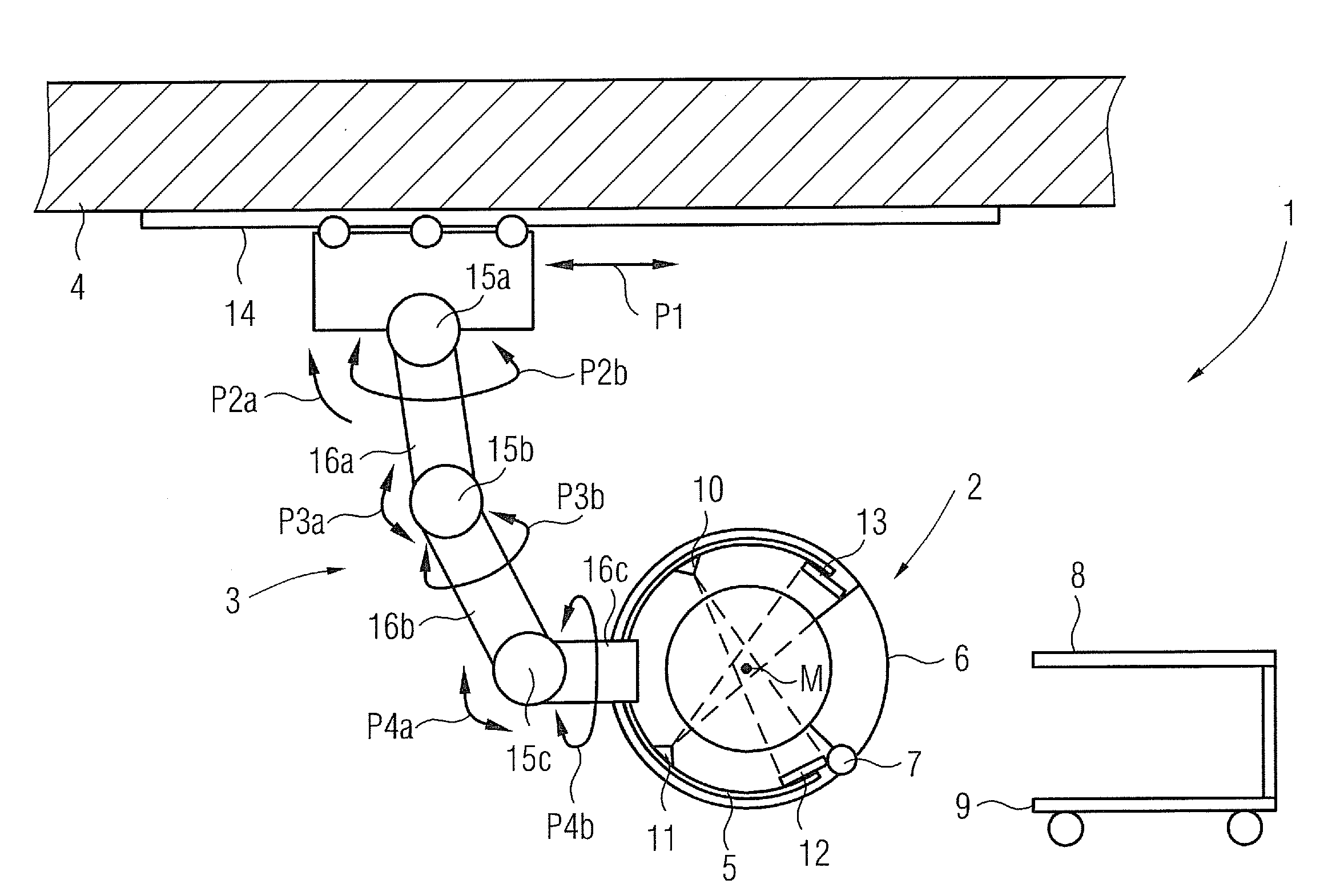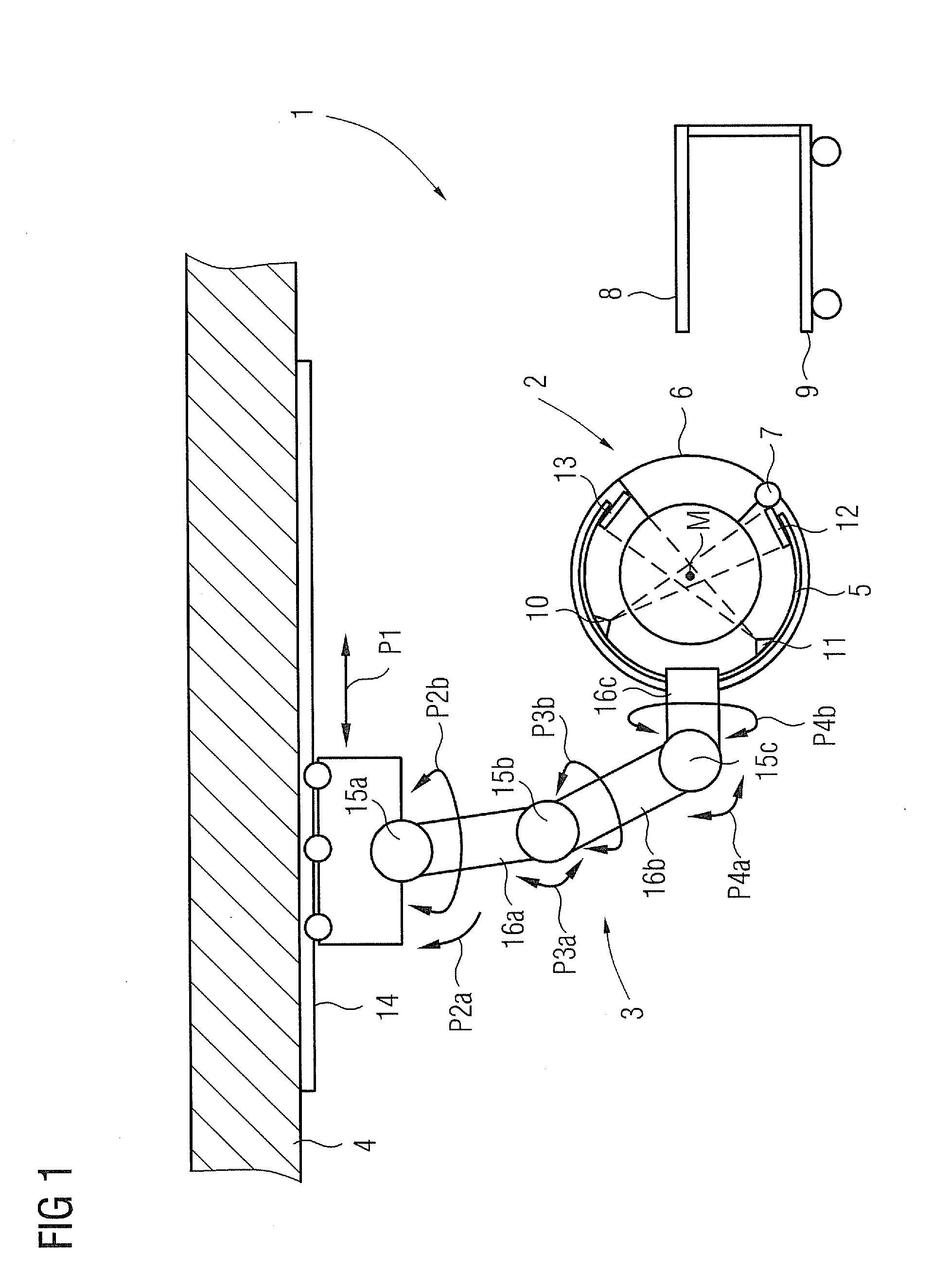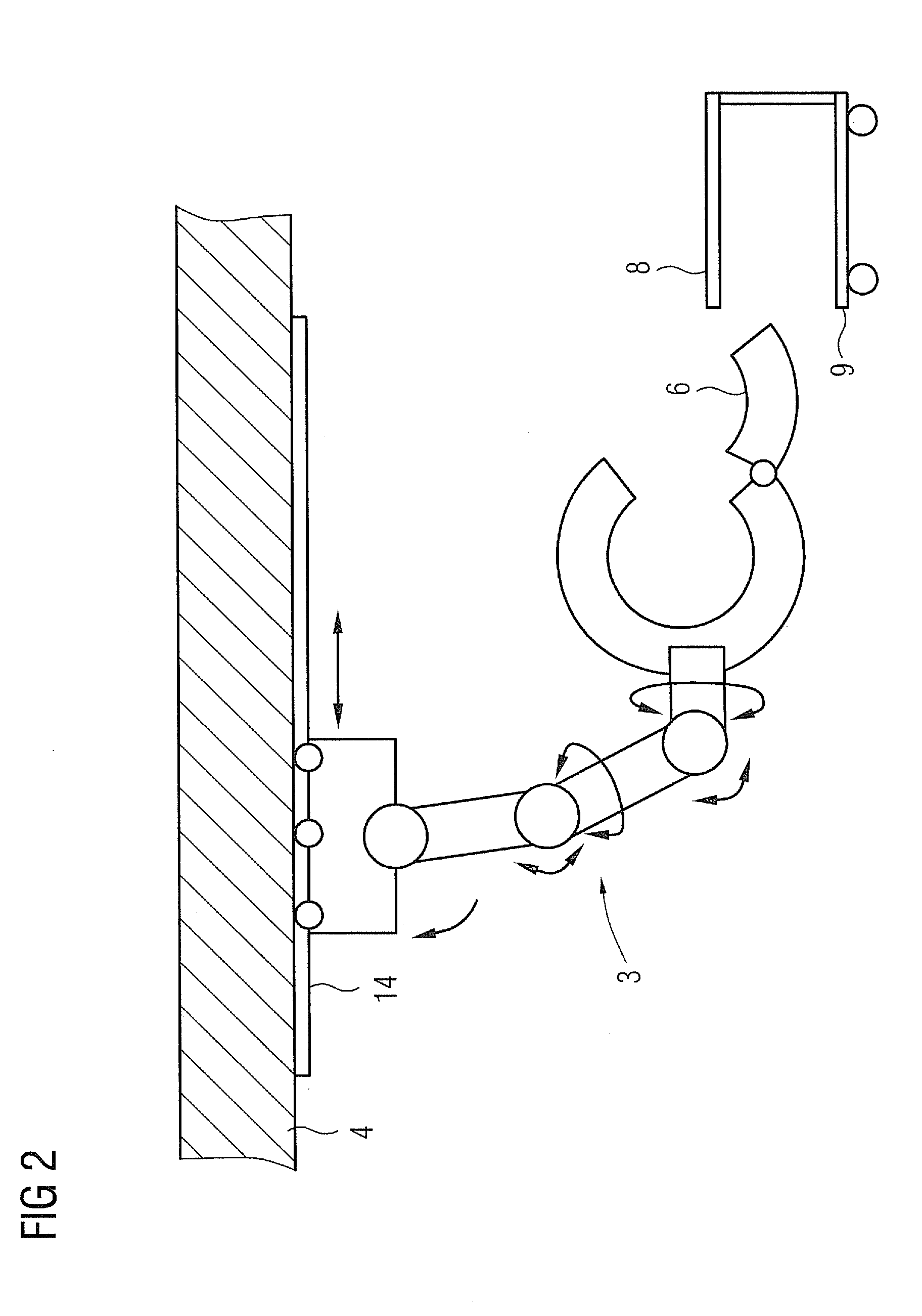Imaging apparatus comprising a ring-shaped gantry
a ring-shaped gantry and gantry technology, applied in the direction of electrical apparatus, x-ray apparatus, medical science, etc., can solve the problems of insufficient information acquisition, large space occupation, unsatisfactory tissue resolution, etc., and achieve the effect of arbitrary positioning of the patient positioning tabl
- Summary
- Abstract
- Description
- Claims
- Application Information
AI Technical Summary
Benefits of technology
Problems solved by technology
Method used
Image
Examples
Embodiment Construction
[0023]FIG. 1 shows in the form of a schematic diagram an imaging apparatus 1 according to the invention, comprising a gantry 2 which is arranged on a ceiling 4 so as to be movable by way of an articulated-arm robot 3. The gantry 2 comprises a rotor arrangement 5 which, driven by way of a motor, rotates about the center point M on runner rails (not shown in further detail) located inside the gantry 2. The rotor arrangement 5 extends through approx. 270°. This enables it to be brought into a park position in which a segment 6 of the gantry which is pivotably mounted by way of a hinge 7 can be swung open (see FIG. 2) so that the inside of the gantry 2 is accessible. It is now possible to position a patient (not shown in further detail) inside the gantry 2 by means of a patient positioning table 8 on which the patient is located and which in the example shown can be moved in space by way of a cart 9. Appropriate locking means (not shown in further detail) are of course provided for the ...
PUM
 Login to View More
Login to View More Abstract
Description
Claims
Application Information
 Login to View More
Login to View More - R&D
- Intellectual Property
- Life Sciences
- Materials
- Tech Scout
- Unparalleled Data Quality
- Higher Quality Content
- 60% Fewer Hallucinations
Browse by: Latest US Patents, China's latest patents, Technical Efficacy Thesaurus, Application Domain, Technology Topic, Popular Technical Reports.
© 2025 PatSnap. All rights reserved.Legal|Privacy policy|Modern Slavery Act Transparency Statement|Sitemap|About US| Contact US: help@patsnap.com



